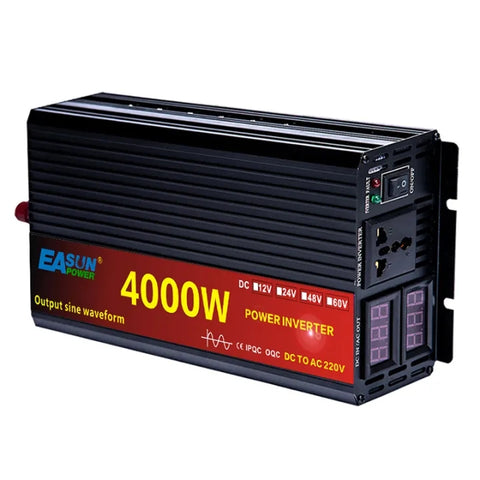In today's fast-paced world, the ability to harness energy efficiently is crucial. Car inverters play a significant role in this, allowing you to convert your vehicle's DC power into AC power. This article serves as a guide for maximizing your car inverter's potential: a simple guide to understanding its key specifications and features.

What is a Car Inverter?
A car inverter is an essential device that converts the direct current (DC) from your vehicle's battery into alternating current (AC). This conversion enables you to power various electronic devices while on the go. But how do you choose the right inverter for your needs? Understanding the specifications is key.
Key Specifications to Consider
- Power Output: The inverter's wattage determines how many devices you can power simultaneously. For instance, a 300-watt inverter can handle small electronics, while a 1500-watt inverter can support larger appliances.
- Input Voltage: Most car inverters operate on a 12V system, which is standard for most vehicles. Ensure that the inverter you choose is compatible with your car's electrical system.
- Output Waveform: Inverters typically produce either a modified sine wave or a pure sine wave. Pure sine wave inverters are ideal for sensitive electronics, while modified sine wave inverters are sufficient for less sensitive devices.
- Safety Features: Look for inverters with built-in protections against overload, short circuits, and overheating. These features enhance safety and prolong the lifespan of your devices.
Maximizing Your Car Inverter's Potential: A Simple Guide
To truly maximize your car inverter's potential, consider the following tips:
- Choose the right inverter size based on your power needs. Assess the total wattage of the devices you plan to use.
- Ensure proper ventilation. Inverters can generate heat, so place them in a well-ventilated area to prevent overheating.
- Regularly check connections and cables for wear and tear. Damaged cables can lead to inefficiencies and safety hazards.
- Utilize energy-efficient devices. This not only conserves battery life but also enhances the overall efficiency of your inverter.
Understanding the Features
When exploring the features of your car inverter, consider the following:
- USB Ports: Many modern inverters come with USB ports for charging mobile devices, adding convenience to your travels.
- Remote Control: Some inverters offer remote control options, allowing you to operate them without needing to access the unit directly.
- LED Indicators: These indicators provide real-time information about the inverter's status, making it easier to monitor performance.
Conclusion
Understanding your car inverter's specifications and features is essential for maximizing your car inverter's potential: a simple guide to enhancing your travel experience. By selecting the right inverter and following best practices, you can ensure that your devices remain powered and your journeys are more enjoyable. For more tips on efficiency and safety, visit  .
.








